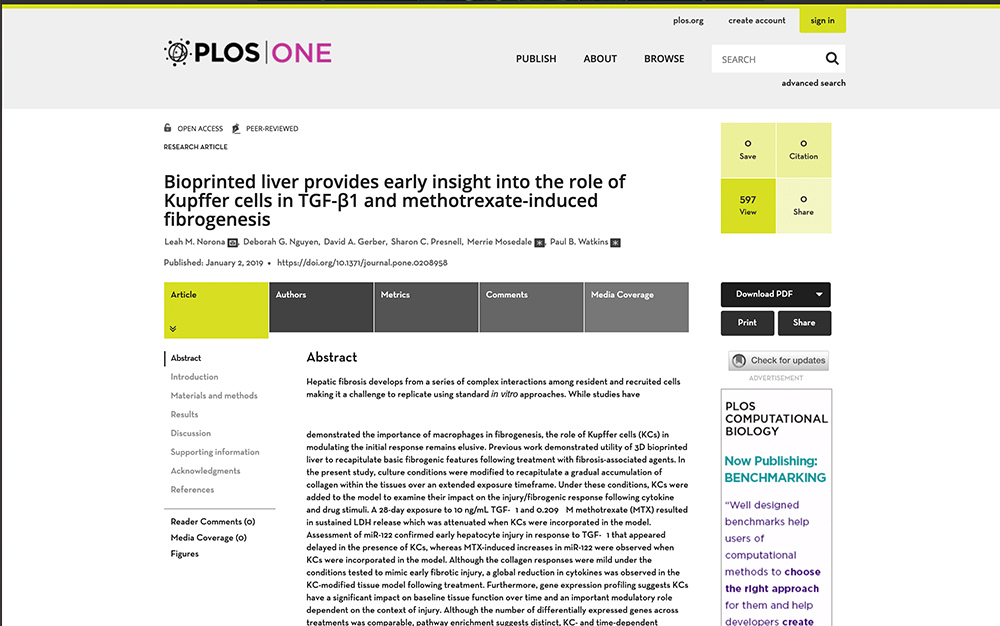Bioprinted liver provides early insight into the role of Kupffer cells in TGF-β1 and methotrexate-induced fibrogenesis
Publication Summary:
Hepatic fibrosis develops from a series of complex interactions among resident and recruited cells making it a challenge to replicate using standard in vitro approaches. While studies have demonstrated the importance of macrophages in fibrogenesis, the role of Kupffer cells (KCs) in modulating the initial response remains elusive. Previous work demonstrated utility of 3D bioprinted liver to recapitulate basic fibrogenic features following treatment with fibrosis-associated agents. In the present study, culture conditions were modified to recapitulate a gradual accumulation of collagen within the tissues over an extended exposure time frame. Under these conditions, KCs were added to the model to examine their impact on the injury/fibrogenic response following cytokine and drug stimuli. A 28-day exposure to 10 ng/mL TGF-β1 and 0.209 μM methotrexate (MTX) resulted in sustained LDH release which was attenuated when KCs were incorporated in the model. Assessment of miR-122 confirmed early hepatocyte injury in response to TGF-β1 that appeared delayed in the presence of KCs, whereas MTX-induced increases in miR-122 were observed when KCs were incorporated in the model. Although the collagen responses were mild under the conditions tested to mimic early fibrotic injury, a global reduction in cytokines was observed in the KC-modified tissue model following treatment. Furthermore, gene expression profiling suggests KCs have a significant impact on baseline tissue function over time and an important modulatory role dependent on the context of injury. Although the number of differentially expressed genes across treatments was comparable, pathway enrichment suggests distinct, KC- and time-dependent changes in the transcriptome for each agent. As such, the incorporation of KCs and impact on baseline tissue homeostasis may be important in recapitulating temporal dynamics of the fibrogenic response to different agents.
View Publication
